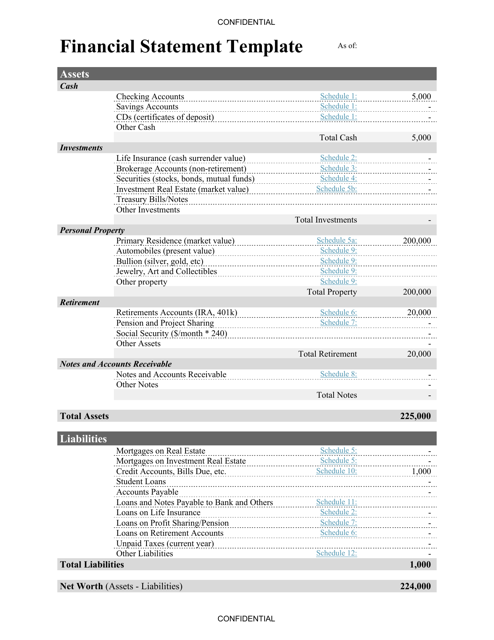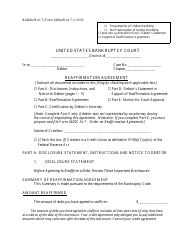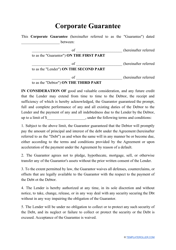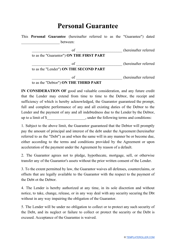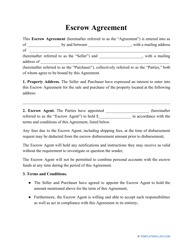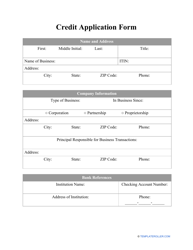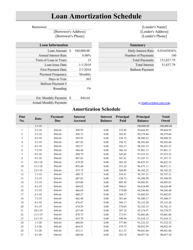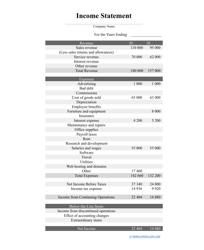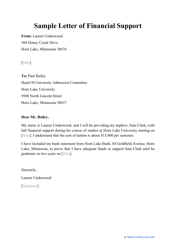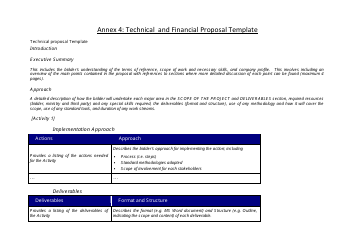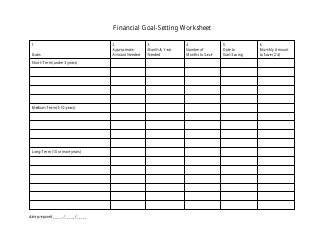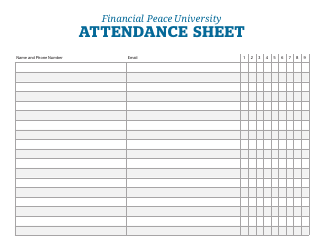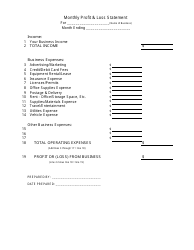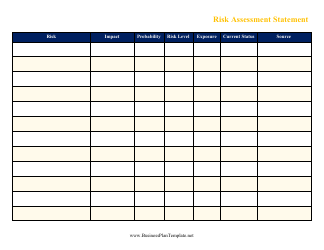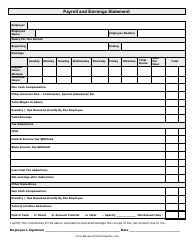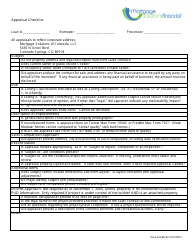Financial Statement Template
What Is a Financial Statement?
A Financial Statement is a written document that outlines the business activities and financial performance of the particular entity. It provides a breakdown of the company's assets, liabilities, revenues, expenses, and equity to give the user an opportunity to understand the company better. This document describes where the money is coming from and where it is going and is very helpful when it is required to make responsible business moves.
Click on the link below to download a printable Financial Statement template. If you need to describe your financial position as an individual, you may create a Personal Financial Statement and calculate the amount of your assets and debts over any period of time.
What Are the Four Basic Financial Statements?
These are the main types of Financial Statements:
- Income Statements. The purpose of this crucial Financial Statement is to find out whether the company creates loss or profit - how much the entity generates in sales, what is the cost of sold goods, what are the gross profits and the net incomes for a certain period of time.
- A Balance Sheet (also referred to as a Statement of Financial Position) informs the user about the entity's assets, liabilities, and the amount of the equity - basically, demonstrating the company's current financial situation and net worth. Compare details of two and more consecutive years, scrutinize the performance of the company, and find out where it can improve.
- Cash Flow Statements demonstrate the amount of cash that comes to an entity and leaves it. It describes where the cash comes from, how a business manages and generates cash to deal with its liabilities, and fund the costs for day-to-day operations.
- Statements of Shareholders' Equity show the company's equity information and the changes in equity that occur as a result of the company's performance. Additionally, it will outline how many funds the shareholders have injected into the company.
How to Prepare a Financial Statement?
Learn how to compose a Financial Statement Form to quantify the financial performance of the company and know which business decisions to make in the future:
- An Income Statement requires calculating the company's entire revenue and determining the value of sold goods. Subtract that value from the revenue and add up the expenses from operations. Compute the income taxes and find out the net income of the business.
- A Balance Sheet is arranged by calculating the assets. To do so, you have to add the company's liabilities (utility and rent payments, debt payments, taxes, payroll expenses) and shareholders' equity, also known as the net worth of the entity. Business assets must always equal its liabilities plus the issued shareholders' equity.
- A Cash Flow Statement typically consists of three parts: operating activities, financing activities, and investing activities. You need to demonstrate cash flow (operations' net cash, sale of the property, purchase of equipment, loan payments) and add up the cash at the beginning and end of the reporting period.
- A Stockholder's Equity Statement demonstrates the value of a stockholder's ownership interest in an entity during a period of time - for example, one year. To learn how the investments work and whether any amendments are needed, you need to calculate different types of stock (common, preferred, and treasury), retained earnings, and unrealized gains and losses from the investments.
How to Read a Financial Statement?
Here are some tips for you on how to have a complete and accurate understanding of the company's finances:
- Decide what to read first. It is possible to just read the highlighted section of any Financial Statement or its condensed summary version instead of a more detailed financial report. However, this cannot be adequate for professional investors and money managers. You should always seek the full version of the company's Financial Statement and study it in its entirety.
- Analyze profit performance in the form of sales revenue. Learn how the revenue compares with the previous year's, find out the gross margin ratio of the company, and put this performance in the context of the current economic situation.
- Pay attention to gains and losses in the Financial Statement. They are supposed to be infrequent; however, if the business reports these losses and gains regularly, it can disrupt the company's ability to have a sustainable income.
- See the cash flow generated by the business. The main purpose of any business is to create the cash flow as quickly as possible - the cash flow generated by operating activities is the bottom line of the Income Statement.
- Check for the signs of financial distress. Analyze the company's solvency by checking its net working capital and debt coverage.
- Know that Financial Statements are limited by nature. You should always be informed about the general economic situation and recent political and technological developments to see the bigger picture and the potential consequences for any business.
Related Templates and Topics:
